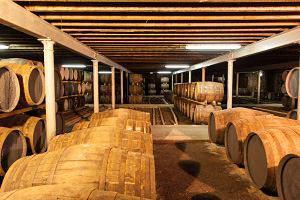Utility of the Barley Genome
Published on 29 January 2013 in Food, health and wellbeing
The International Barley Sequencing Consortium (IBSC), spearheaded by groups in the James Hutton Institute and Germany has published an in-depth global survey of the barley genome in the journal Nature. It is expected that the research will underpin future breeding efforts that will produce new and better barley varieties vital for the farming, beer and whisky industries.

Key Challenges
The barley genome is almost twice the size of that of humans and determining the sequence of its DNA has presented a major challenge. This is largely because its genome contains a large proportion (c. 80%) of closely related segments that, after sequencing using contemporary technologies, are difficult to piece together into a true linear order. By developing and applying a series of innovative strategies that allowed them to circumvent these difficulties, the IBSC, has managed to construct a high resolution DNA sequence assembly that contains the majority of barley genes in linear order.
Key Benefits
Barley is the world’s fourth most important cereal crop both in terms of area of cultivation and in quantity of grain produced. While it is known best for the production of whisky and beer, most barley produced is a major component of the animal feed that underpins the meat and dairy industries. Barley straw is a source of nutrition for ruminants, used for animal bedding in the winter, and for frost protection in horticulture. Whisky is the UKs single most important Food and Drink commodity worth an estimated £4-5 Bn annually to the UK economy.
The IBSC publication provides a detailed overview of the functional portions of the barley genome, revealing the order and structure of most of its 32,000 genes and a detailed analysis of where and when genes are switched on in different tissues and at different stages of development. They describe the location of dynamic regions of the genome that, for example, contain genes conferring resistance to diseases, that will provide a far better understanding of the crop’s immune system. It should therefore help in the fight against cereal crop diseases that cause millions of pounds of losses annually. The breakthrough also represents a critical step towards generating barley varieties able to cope with the demands of climate change.
While it is known best for the production of whisky and beer, most barley produced is a major component of the animal feed that underpins the meat and dairy industries.
By resequencing a range of unique barley lines they highlight with unprecedented detail the extent of natural genetic variation that exists within elite barley germplasm. Such genetic variation is the foundation of traditional crop improvement programmes and understanding its extent and distribution is invaluable for both barley researchers and breeders.
Professor Robbie Waugh, one of the leaders of the effort commented “Access to the assembled catalogue of gene sequences will streamline efforts to improve barley production through breeding for varieties better able to withstand pests and disease and deal with adverse environmental conditions such as drought and heat stress.
It will accelerate research in barley, and its close relative, wheat. Armed with this information breeders and scientists will be much better placed to deal with the challenge of effectively addressing the food security agenda under the constraints of a rapidly changing environment.”
A small portion of the JHI teams time was allocated against WP5.2, while the major funders included RESAS through joint competitive funding streams (e.g. BBSRC Response Mode, ERA-PG) and the European Union Framework Programmes over the past 10 years.

.jpg)
Comments or Questions
Related Websites
Our Partners
The IBSC includes scientists from Germany, Japan, Finland, Australia, the United Kingdom, the United States and China.
Find Out More
If you want to find out more about the Global barley genome sequencing effort contact the authors via the details below.Authors
Robbie Waugh Robbie.Waugh@hutton.ac.uk
Pete Hedley Pete.Hedley@hutton.ac.uk
David Marshall David.Marshall@hutton.ac.uk







